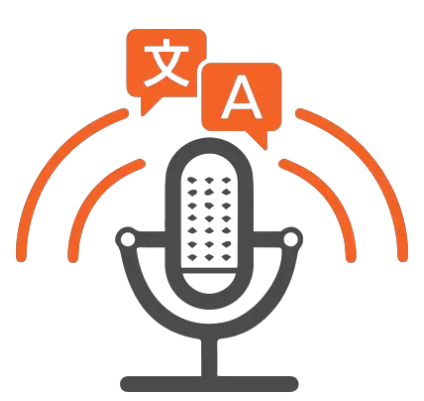The terms “Transcription” and “Translation” are somewhat different and similar simultaneously. In this blog, we will try to demarcate the not-so-clear difference between Transcription and Translation and carve out some interesting similarities.
What do we mean by Transcription and Translation?
To identify the difference between Transcription and Translation it is necessary to understand the meaning of the two words. As per Merriam-Webster, you “make a written copy” when you transcribe. A written copy is made based on what you hear. It involves information from documents and audio. When a document or audio file is transcribed, the written output is an exact copy of what’s being shared. Which results in the creation of a written record that is free of embellishment, personal opinion, or other additions. It is a written copy of the original material. There are three ways in which transcription can be done:
- Verbatim Transcription: In the case of Verbatim Transcription, one listens to audio/ video while writing down the exact words spoken.
- Edited Transcription: In this case, a transcriptionist listens to audio/video and omits parts of the file before transcription, as long as the meaning of the information is not changed.
- Intelligent Transcription: The transcriptionist listens to audio/ video and chooses to omit unnecessary information from the speech such as emotions, half-sentences, or inaudible words in the transcription.

As per Merriam-Webster, translation is “a rendering from one language into another.” Meaning thereby, taking material in one language and creating a written record of the same material using a different language.

Henry Harvin has come up with some of the best language courses. They not only focus on English as a language but the Henry Harvin Language Academy also has specially curated courses in German, Spanish, French, Korean, etc.
The difference between Transcription and Translation in Language
The basic difference between Transcription and Translation is that in the case of translation, there is a conversion of written and sometimes audio information into another language. The language from which the information is converted is called the source language and in which it is converted is called the target language. Whereas, in the case of transcription, it involves only the source language. The spoken information in audio/video is converted into written text. Therefore, translation is far more complex than transcription. In translation one has to make sure the meaning of the sentence or paragraphs doesn’t change.
1. The process of Transcription and Translation
A transcription is also different because it represents specific distinctive expressions that another language may not represent. A translation converts such distinctive expressions into the desired language from the source text. One of the best examples of this difference can be found in the word “détour”. In English, “détour ” is often spelled as “detour,” without the accent marks. In the case of transcription, these accents would be required in the native language, i.e., French, to create an accurate translation in the future. The accents will be removed if they are being translated into English.
2. Role of Transcription and Translation
In Semantics, transcription is a crucial component of a system of methods of sociolinguistics, dialectology, conversation analysis, and phonetics. It plays an essential role in varied subdivisions of speech technology. Whereas, translation handles two categories i.e. literary and non-literary.Literary translation entails the translation of literature such as poems, stories, and novels. Non-literary translation includes translating legal, scientific, and other significant documents. The definitive roles clearly demarcate the difference between Transcription and Translation.
3. Formats for Transcription and Translation
Transcription handles two formats i.e. from recorded and written. Whereas the translator deals with written content. Though, there are times when clients only have audio or video recording of the source materials. In such cases, the media is first to be transcribed and then it is translated.
4. Requisites of Transcriber and Translator
A transcriber works with one language therefore the core competency in that language is mandatory. Whereas in case of the translator must be very proficient in the language he has to translate as well as the language of the source. It is advisable to work only with translators who are native speakers. The translator should be well aware, rather sensitive towards the culture of the language in which he/she is translating which is also termed as the target language. More so, they should be well-versed in the nuances, grammatical differences, idioms, slang, and idiomatic expressions of both languages. This is one of the foremost Differences between Transcription and Translation.
5. Usage of Translation and Transcription
Usage is the key to understanding the difference between Transcription and Translation. Transcription is used in fields like journalism to turn audio interviews into text documents that can be quoted and cited in articles and essays. Transcription is also used in medical and legal contexts; when a patient needs all the information in writing from a complex meeting with a medical professional or when a court case requires transcripts of witness statements, court proceedings transcription services are used.
Translations are used in literary works that have the potential to draw the attention of the audience toward a new language. It is used in the field of news and media who wish to reuse stories originally written in another language. The translation is also used in the marketing of products, to gain a foothold over a different linguistic demography.
6. Meanings vs Words
Ultimately it boils down to Meanings v words. One translates into the target language to convey the meaning of the words. On the other hand, one transcribes to convert audio or video information into written words. This is one of the simplest ways to understand the difference between Transcription and Translation.
Similarities between Transcription and Translation

While the differences between Transcription and Translation are several. They share some similarities as well. Some of the noticeable similarities are listed below:
- Both create written material. One converts it from an audio or video source and the other converts information from the source language into the target language.
- Transcriptions and translations are similar in the way they convey information to people. A transcription is an exact copy, in writing, of “text” that is created through speaking. A translation is an exact copy, in writing, of a text using a different language.
- Both are useful for online resources. Podcast transcripts are beneficial who have ear ailments. Translations provide subtitles for foreign entertainment so that more people can understand and enjoy what they are viewing.
Conclusion
In the world of languages, accuracy is an important requisite. One should be able to grasp whether there is a need for translation or transcription. Confusing these terms may lead to a linguistic catastrophe. The above-mentioned distinctions can help us identify the major difference between Transcription and Translation in language.
Recommended Blogs
6 Ways How Foreign Language Changes Your World
What is the difference between Language and a Dialect
25 Languages for Travellers: Learn them before Taking-off
FAQ’s
Ans. Transcription helps you convert recorded speech into text. Transcription means converting information from an audio/ video recording into text.
Ans. Translation is the conversion of information from one language into another.
Ans. For example, The Bhagwad Gita was written in Sanskrit. But not everybody understands Sanskrit. Therefore, to make the text accessible and understandable, it was translated from Sanskrit into various other languages like Hindi, English, etc.















